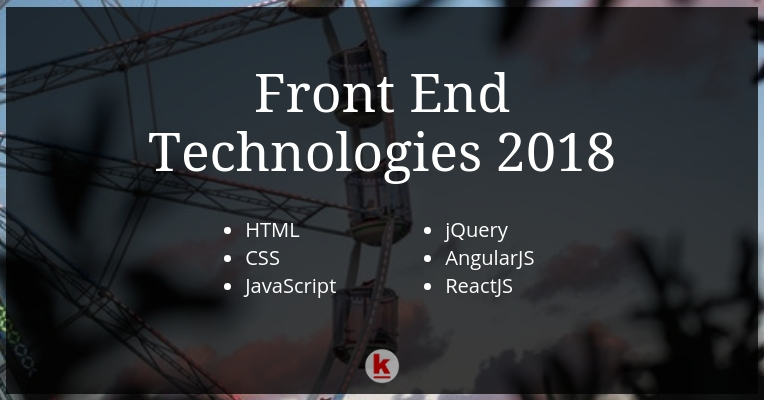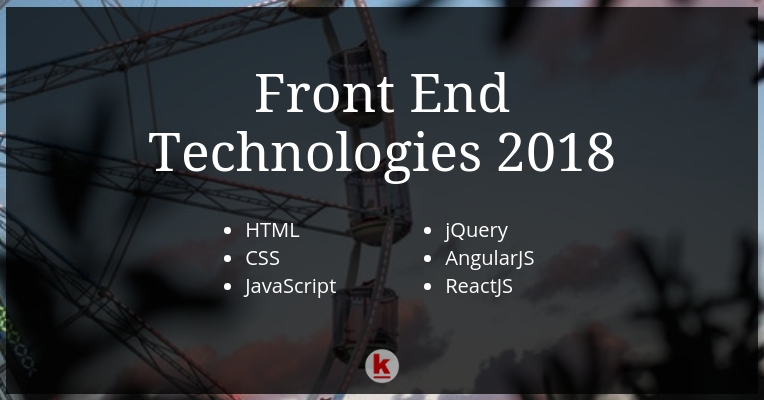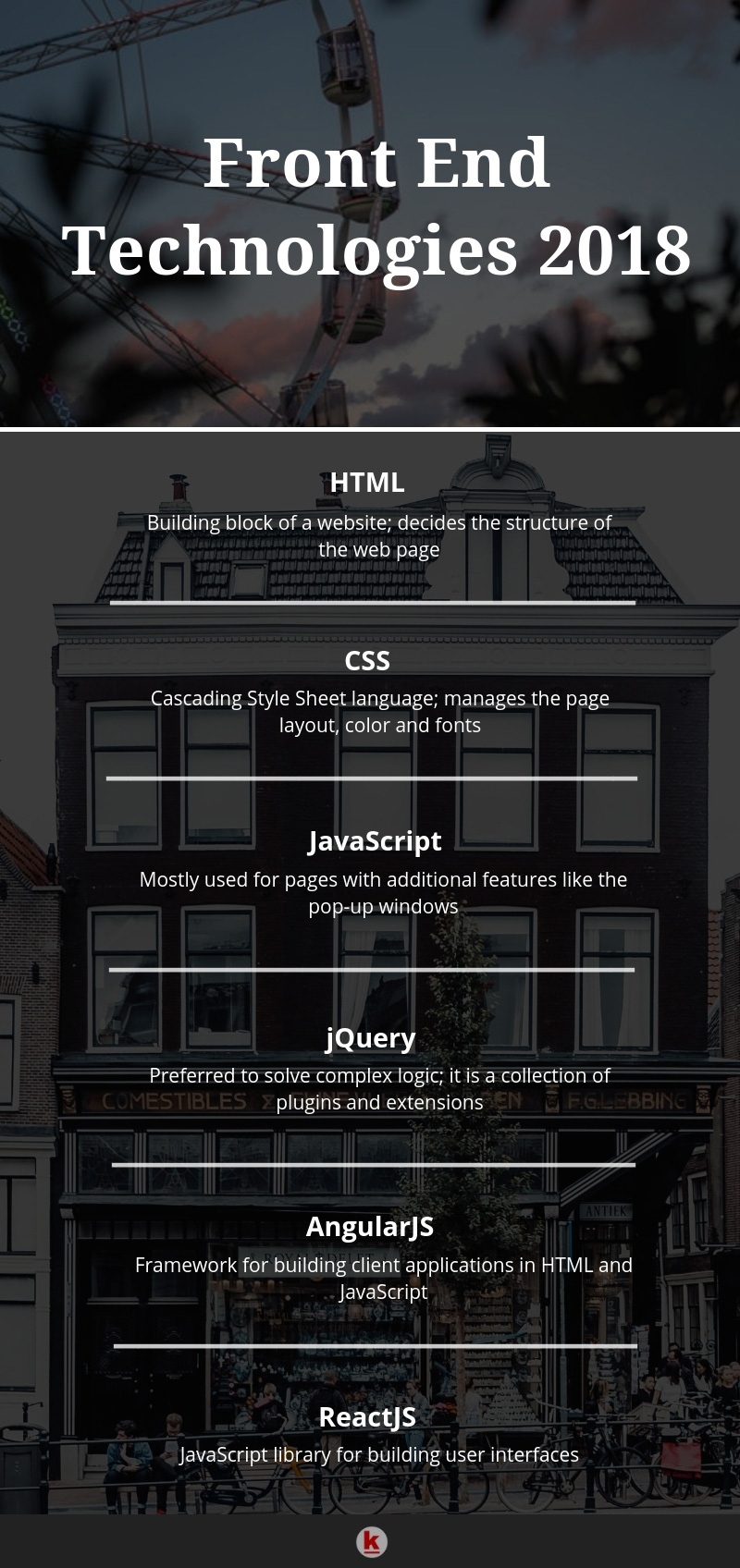
Front End Technologies 2018

The digital world is a multi-layered one, multiple pieces of technology come together to deliver an experience to you through a screen. If you ever think about how web pages and websites are made, a lot goes on behind the curtain. If you’re new to Web Development, we’re going to break down for you the technologies you should be aware of.
Think of it in two sections: The front end and the back end. The front end of a web page is the part that users see and interact with. This includes laying out the various elements of a web page like interface, text, images, animation and all other content. A user keeps coming back to a website that gives them an amazing viewing experience.
What you see as a website, is the final outcome of many processes that go into making a refined version. This brings us to our topic of “Front end technologies 2018”.
Here is a list of front end technologies that you should be well aware of when diving into the world of development:
HTML
HTML (Hyper Text Markup Language) is a markup language that allows you to create the structure of your webpage. Through this, you place all the test, images, links on to your page, without any styling (that part is provided by the CSS, which we’ll get to soon)
HTML defines the structure of web pages, which means publishing online documents with headings, text, tables, lists etc. is possible here.
CSS
CSS, (cascading style sheet) manages the page layout, colour and fonts of all web pages at once. It’s what brings your content to life. External sheets are stored in CSS files which helps present the document that you create with HTML. CSS is independent of HTML and can be used with any XML markup language.
HTML and CSS are the building block for developing any website.
JavaScript
JavaScript or JS is one favorite tool of any developer. Just like HTML is a markup language and CSS is a cascading language, JS is a scripting language, which determines the functioning of a web page.
JS is not mostly used for simple web pages. It is commonly used for web pages that have an appealing UI, like moving objects, flashy elements on the screen like pop-up window.
jQuery
jQuery is not a programming language, instead it is a cross platform JavaScript library. It is a collection of plugins and extensions that help make it easy to use JS on a website. It is created to help programmers with creating common UI and take care of browser compatibility issues more easily.
A code written in jQuery is converted to JavaScript. One line of code written in jQuery is equal to many lines of code using JavaScript, which means programmers will have to write lesser code. JavaScript can be slower if you want to write some complex logic, whereas jQuery is preferred in such cases.
In simpler terms, jQuery is optimized to do the common scripting functions with fewer lines of code.
AngularJS
A JavaScript-based open-source framework for front-end web applications, AngularJS is maintained by Google. It addresses many challenges encountered while developing single-page applications.
ReactJS
React is a JavaScript Library for building user interfaces maintained by Facebook. It’s great for large web-applications which use data and allows change over time without reloading the page.
React make it simple to create interactive UIs and can be used in combination with other JS libraries or frameworks such as AngularJS.
There you go, that’s a rough idea about the essential technologies one should know of when it comes to websites and website development. Knowing these basics will allow you to communicate better with any development team that you may work with.
Give your content exposure on the RedAlkemi blog! Submit a guest post with us.
